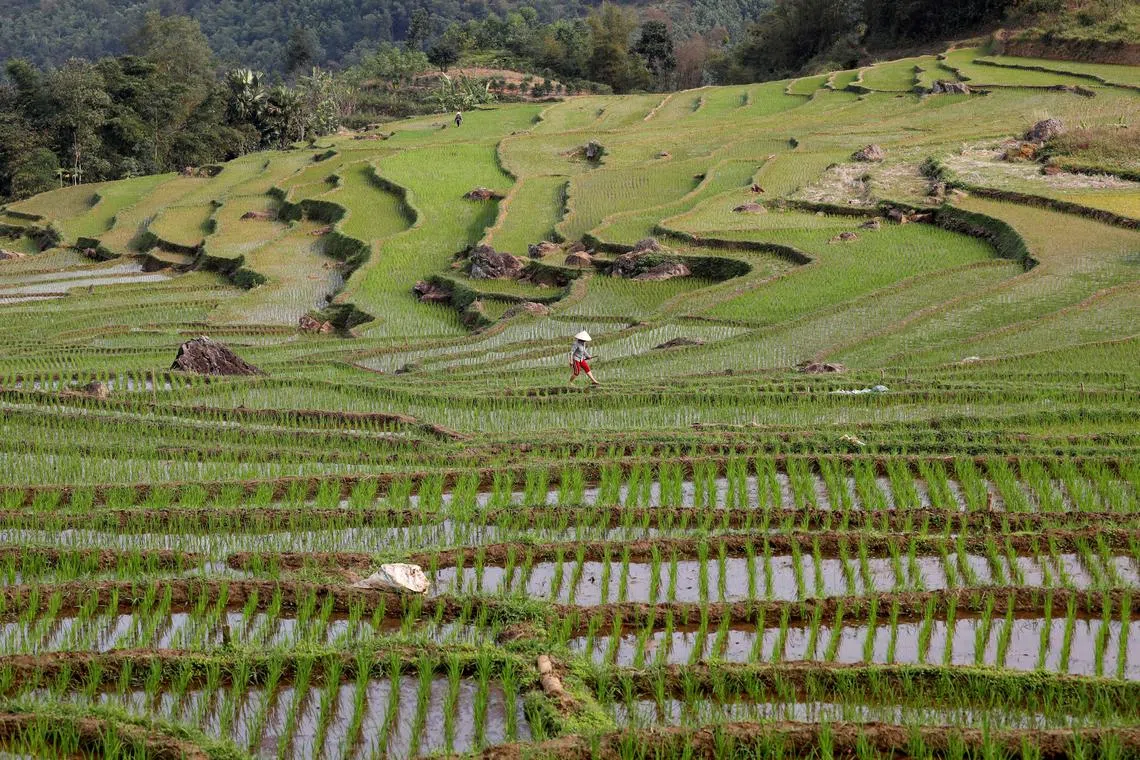Vietnam to cut annual rice exports by 44% to 4 million tonnes by 2030
Sign up now: Get ST's newsletters delivered to your inbox

Vietnam will diversify its rice export markets to reduce its reliance on any country.
PHOTO: REUTERS
Follow topic:
HANOI - Vietnam aims to cut its rice exports by 44 per cent to four million tonnes a year by 2030, the government said in a document detailing its rice export strategy, down from 7.1 million tonnes in 2022.
Vietnam is the world’s third-largest rice exporter, after India and Thailand.
The South-east Asian nation exports 80,000 tonnes to 90,000 tonnes of rice worth nearly $80 million to Singapore each year, making up 20 per cent of the local rice market.
The move to cut rice exports is aimed at “boosting the exports of high-quality rice, ensuring domestic food security, protecting the environment and adapting to climate change”, according to the government document dated May 26 and reviewed by Reuters.
Rice export revenue will fall to US$2.62 billion (S$3.54 billion) a year by 2030, down from US$3.45 billion in 2022, the document said.
“Although Vietnam’s rice farming area is shrinking due to climate change and some farmers are switching to growing other crops and raising shrimp, the strategy appears to be too aggressive,” a rice trader based in Ho Chi Minh City said on Saturday.
The trader said some rice farmers in the Mekong Delta are turning parts of their fields to fruit farms and growing mango, grapefruit, jackfruit and durian, but the vast majority remain dependent on rice.
The trend towards cultivating shrimp
Vietnam will diversify its rice export markets to reduce its reliance on any country, the document said. The Philippines has long been Vietnam’s biggest rice buyer, accounting for 45 per cent of its shipments in 2022.
Vietnamese Prime Minister Pham Minh Chinh told Philippine President Ferdinand Marcos Jr at a regional meeting in Indonesia in May that Vietnam was willing to supply rice to the Philippines for the long term at reasonable prices.
By 2025, 60 per cent of Vietnamese rice exports will be shipped to Asian markets, 22 per cent to Africa, 7 per cent to the United States, 4 per cent to the Middle East and 3 per cent to Europe, the document said.
The Vietnam Food Association, which represents rice processors and exporters, did not immediately respond to requests for comment.
The government said Vietnam will focus on the production of high-quality, fragrant and glutinous rice, while reducing the production of low-quality grains to 15 per cent of total output by 2025 and to 10 per cent by 2030.
“I doubt the strategy will materialise, as rice production depends on supply and demand, not on a government decision,” another rice trader in the Mekong Delta province of An Giang said.
Rice exports from Vietnam in the first four months of 2023 rose 40.7 per cent from a year earlier to 2.9 million tonnes, according to government customs data.
Singapore and Malaysia are among the top 10 largest importers of Vietnamese rice. REUTERS

